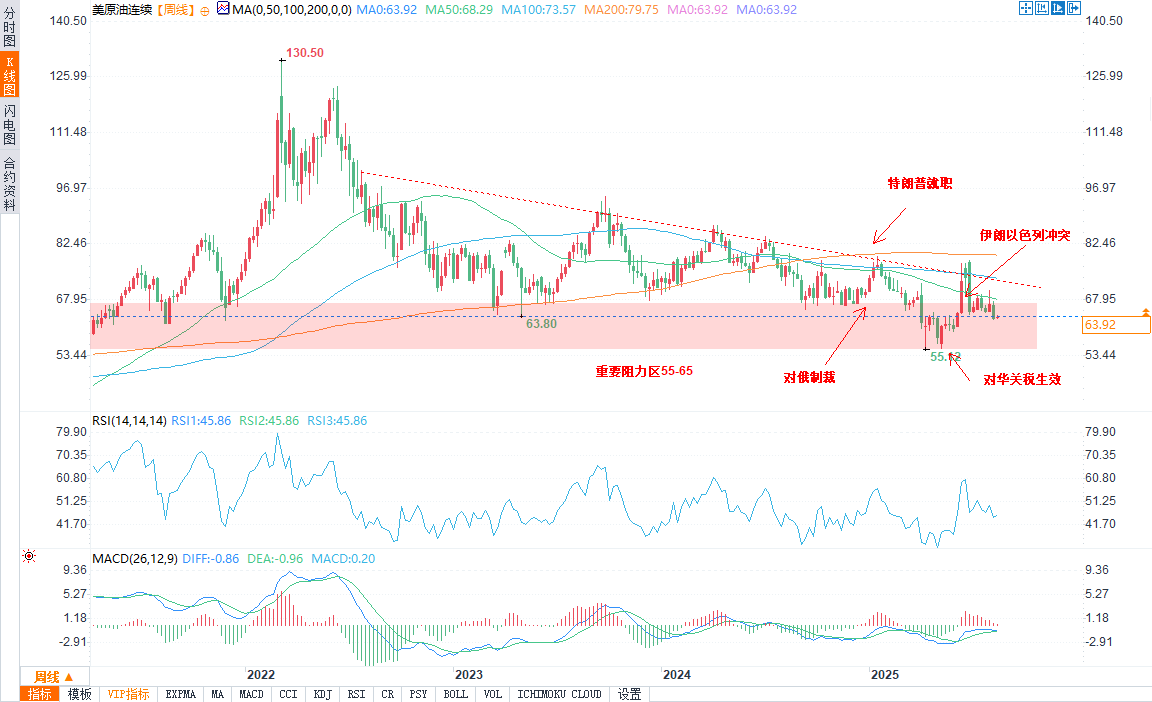Tariffs on Russian crude buyers shake energy markets and oil prices
2025-08-11 18:21:11

US President Trump has expanded his tariff strategy into the energy sector, imposing tariffs on Indian goods due to imports of Russian crude oil. This marks the first direct economic penalty against Russian energy exports during his second term. These secondary tariffs are intended to cut into Russia's crude oil revenues and put pressure on its main buyers, potentially tightening global supply and increasing market volatility.
Trump's tariffs target Russian crude buyers, heightening energy market risks
US President Trump has expanded his tariff strategy to the energy sector, imposing an additional 25% tariff on Indian goods due to India's imports of Russian crude oil.
Secondary tariffs are intended to pressure Moscow's main customers, cutting into the crude oil revenues that fund the conflict with Ukraine. Imposing such a measure on India could significantly disrupt Russian crude oil sales. However, it could also tighten global supply. These actions could trigger another layer of volatility in oil prices, exacerbating global inflationary pressures.
The crude oil market has already priced in some supply risks from the geopolitical standoff. Russia, the world's second-largest crude oil exporter, has been rerouting crude oil from Europe to Asia since the implementation of Western price caps in 2022. The caps have allowed discounted Russian crude to continue flowing, limiting the market impact. However, new tariffs could significantly shift this balance and impact the energy industry.
Energy industry braces for price volatility and market uncertainty
Uncertainty about oil prices could directly impact the global energy industry. For crude oil producers, reduced Russian supply would push up benchmark crude prices and boost revenue. US energy companies, particularly shale oil producers, could benefit from higher profit margins. However, for refiners and fuel distributors, rising costs could squeeze profits and increase prices for consumers.
The knock-on effects could extend to the natural gas and renewable energy markets. If oil prices rise, investment flows could shift to alternative energy sources to hedge against volatility. However, short-term trade disruptions with India and China could slow clean energy cooperation and technology exchange.
Of the four major US energy companies, Chevron (CVX) was the sole winner, rising 6.91% as of August 11, 2025. ExxonMobil (XOM) fell 10.14%, Valero Energy (VLO) dropped 11.78%, and ConocoPhillips (COP) suffered the largest decline, falling 13.53%. These declines reflect volatility stemming from tariff threats, geopolitical tensions, and supply risks. Oil price fluctuations in early 2025 also triggered significant volatility, and the tariff news further weighed on the sector's outlook.
Technical Analysis
Crude oil monthly trend – long-term resistance around $70

(WTI crude oil monthly chart source: Yihuitong)
The monthly chart of WTI crude oil shows bearish momentum emerging below the long-term resistance level of $70. The price has broken out of a symmetrical triangle pattern and is forming a negative price action pattern.
A decisive break below the $58-60 support range would confirm the start of the next bearish trend. On the broader long-term timeframe, oil prices remain within a descending channel, suggesting continued volatility. This short-term price action reflects the ongoing tug-of-war between bullish momentum and bearish pressure in the market as prices break out of a symmetrical triangle pattern.
Crude Oil Weekly – Tariffs and Geopolitical Tensions Pose Bearish Risks

(WTI crude oil weekly chart source: Yihuitong)
The weekly chart of WTI crude oil shows weakness, with prices breaking below its triangle pattern. Trump's tariff announcement and the intense uncertainty in the stock and crude oil markets caused by the geopolitical crisis in the Middle East have exacerbated sharp price swings and increased volatility.
This volatility is forming a bearish pattern. A break below the $55 level would confirm the next leg down in oil prices.
- Risk Warning and Disclaimer
- The market involves risk, and trading may not be suitable for all investors. This article is for reference only and does not constitute personal investment advice, nor does it take into account certain users’ specific investment objectives, financial situation, or other needs. Any investment decisions made based on this information are at your own risk.





















